Anne’s Animals
Arctic Fox (Vulpes lagopus, also Alopex lagopus):
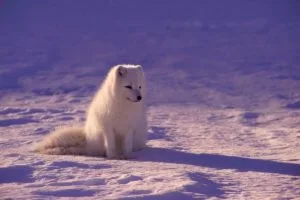
They’re called tiriqaniaq in Inuktitut, the language of the Inuit.
Also known as white fox, polar fox, and snow fox, Arctic foxes are native to polar regions in North America, Greenland, Iceland, and Eurasia. They’re canids, so they’re related to dogs, wolves, coyotes, jackals, African wild dogs, and dingoes.
Most have long white fur in the winter, although some are a grayish-blue color. They have short dark fur in the summer. They were an important part of the Inuit economy between the 1920s and the 1970s. The Inuit used the white winter skins to trade for goods at trading posts.
About the size of a large house cat, they’re a maximum of 12 inches tall at the shoulder and weigh between 6.5 and 17 pounds. They have relatively short legs, muzzles, and ears and the thickest fur of any mammal, all attributes that conserve heat.
The lagopus in their name means “rabbit footed.” It refers to the fact that the bottoms of their paws are covered with fur as a protection from cold. They’re not bothered by temperatures of -50 degrees Fahrenheit or colder.
They’re opportunistic feeders. They’ll eat almost anything they can get in their mouths, but their favorite food is a small rodent called a lemming. They also eat voles, hares, ringed seal pups, fish, birds, carrion, berries, seaweed, insects, and other small invertebrates.
Red foxes, golden eagles, snowy owls, wolverines, wolves, grizzly bears, and humans prey on them. In spite of their demanding and dangerous lives, though, populations are stable, so they’re not considered endangered.
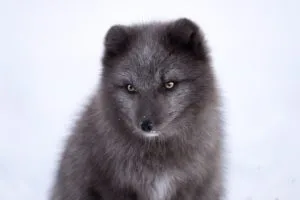
They normally live three to six years. The vixen can reproduce before she’s a year old. Litters average about five kits, but litters of 20 or more kits are not unknown.
Caribou (Rangifer tarandus):
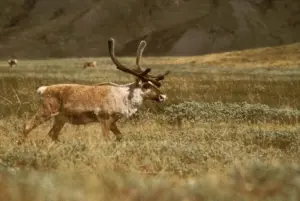
Caribou, tuktu in the Inuit language Inuktituk, live in the far north in North America, Greenland, Iceland, and Eurasia in arctic and subarctic areas. In the 19th century, they lived as far south as Washington, Idaho, and New England. Approximately a million caribou currently live in Canada and another million in Alaska. About a dozen can still be found in Idaho, but they are severely endangered.
Caribou were central to the Inuit economy, and are still important. Their meat was used as food for humans and dogs, their skins for clothing, and their bones and antlers for raw material for tool making.
The wild caribou of the Ungava peninsula, the Leaf River Herd, are forest caribou/migratory woodland caribou. They number about 332,000, and are the only caribou herd in North America not threatened with extinction. They can migrate as much as 3,000 miles a year, the longest migration for any terrestrial animal.
Calves are born in May or June at the end of the northern migration. By the time they’re a day old, they can run faster than the fastest human.
Domestic caribou, called reindeer, are economically important in Eurasia. Wild or domestic, caribou are related to cattle, goats, bison, antelope, camels, and llamas, and like those animals, they chew their cuds.
They eat lichens (especially reindeer moss), willow and birch leaves, sedges, and grasses. When food stressed, they’ve sometimes even been observed eating lemmings, Arctic char, and birds’ eggs. In turn, they are preyed upon by humans, wolves, wolverines, lynx, bears, and golden eagles.
Adults grow to between 33 to 59 inches at the shoulder, and both bulls and cows grow antlers. Large bulls can have antlers measuring as long as three feet.
Northern Collared Lemming (Dicrostonyx groenlandicus)
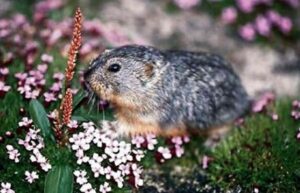
In Inuktitut lemmings are known as kilangmiutak—one-who-falls-from-the-sky
Dicrostonyx is the only genus in Rodentia in which individuals have completely white coats in the winter season. They also develop unique double digging claws on the front toes to break through ice and snow.
D. hudsonias (the collared lemming or varying lemming) is common on the tundra of the Ungava Peninsula in northern Quebec. It’s called the collared lemming because of the dark fur that circles the back of its neck and varying lemming because it’s the only lemming that turns white in the winter.
They’re rodents related to rats, mice, voles, muskrats, gerbils, and hamsters. They’re small, less than 7 inches long and under three ounces in weight. They’re usually brown or gray and have stubby tails.
Because they live in areas of permafrost, they can’t tunnel underground in most places, so they live out of sight as much as possible. In the winter, they build grassy nests on the ground under the snow. The snow insulates them from the worst of the weather. They don’t hibernate nor do they store food. They simply tunnel and eat mosses and lichens.
They total diet includes tundra grass, sedge, moss, bark, berries, lichens, and roots. They provide a tasty morsel for most of the carnivores in the area, especially foxes and some birds, including snowy owls, gyrfalcons, and jaegers.
Lemming populations can vary widely. The females can have as many as three litters a year. The population can grow ten-fold in a single summer. This seems to happen every four years or so. Then the population can crash as food grows scarce. In the years of low population, foxes and owls can’t raise their young to adulthood. There’s just not enough food.
When they eat all the available food in an area, they disperse to a new area, but they don’t migrate. An urban legend recounts that when lemming population becomes too dense, they will commit group suicide by running off a cliff into the sea, but it’s not true. A 1958 Disney nature film called White Wilderness popularized this myth. Evidently, the filmmakers faked the footage showing “lemming suicide.” To get some of it, they actually herded lemmings off cliffs. You can read more about this strange story on line, and even see the footage.
A second and better movie that features “arctic mice” (including lemmings) is Never Cry Wolf (1983), also a Disney film, starring Charles Martin Smith. This is a don’t-miss movie, one of my favorites.
Ringed Seal (Pusa hispida, aka Phoca hispida)
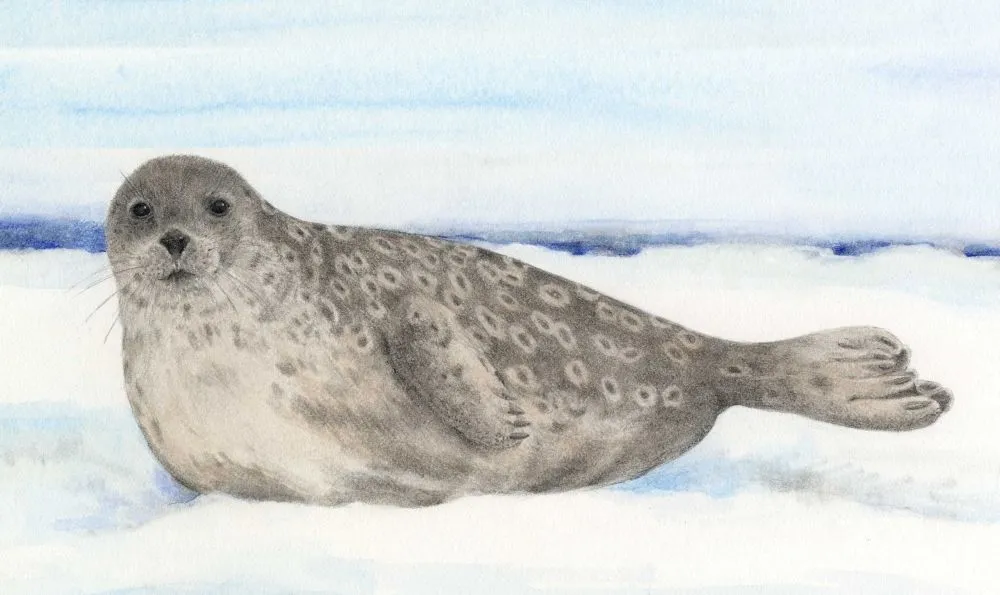
Ringed Seal (Pusa hispida, aka Phoca hispida), These seals, called nattiq in Inuktitut, are among the most important food animals for the Inuit.
They have dark fur on their backs and sides dappled with light gray rings. Their bellies are light gray or silver. They’re the smallest and most common seals in the Arctic and sub-Arctic, averaging about five feet long and weighing 110 to 150 lbs.
Ringed seals eat fish, shrimp, and crustaceans, including krill. They live 25 to 30 years, assuming they’re not dinner for one of their many predators, including polar bears, killer whales, Greenland sharks, Atlantic walruses, and humans. Glaucous gulls, foxes, wolves, wolverines, and ravens prey on young seals.
They live almost all their lives in the water or on sea ice. They haul out to rest, to molt, to give birth, and to mate. Except when they mate or are nursing young, they live solitary lives.
In the winter, they use special large claws on their front flippers to excavate breathing holes in the sea ice. They can dig up through ice sheets that are thicker than they are long.
It’s estimated that there are about two million in the world now and that the population is stable. They’re not considered endangered at this time, but that might change in the near future. As the world warms and sea ice melts, they will be challenged by possible changes in their food supply and competition from fishing boats that up to now have been unable to exploit the icy parts of the Arctic Sea. Additionally, they won’t have places to haul out to give birth or hide their newborns.
